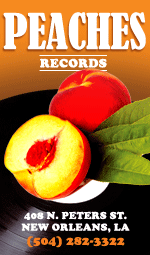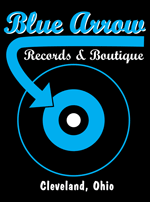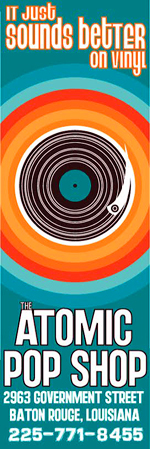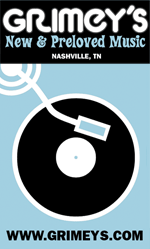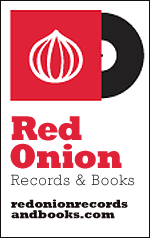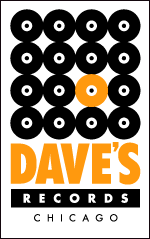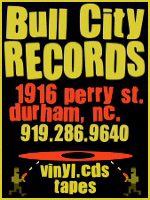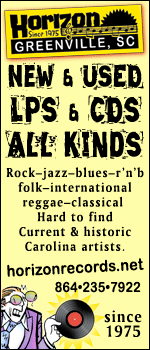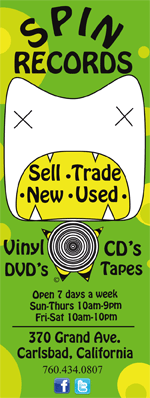
If there were any justice in the world, the Steve Miller Band’s Fly Like an Eagle would not exist. Because it would have been blindfolded, stood before a bullet-pockmarked wall, and shot, for the crimes of being slick, lyrically vacuous, and just plain dumb.
Lucky for us there is no justice under the human sun, because Fly Like an Eagle is almost as guilty a pleasure as, I don’t know, Frampton Comes Alive or Hotel California, just two of the LPs Fly Like an Eagle beat out to win Rolling Stone’s award for Best LP of 1976. It also won out over Night Moves and Boston. You’ve got to hand it to The Steve Miller Band; rolling over that kinda competition is, by anyone’s standards, an extraordinarily unimpressive accomplishment.
More impressive is the way Miller—a psychedelic-era San Francisco acid-blues survivor who seemed destined to perpetual journeyman status—hung on through seven poorly selling albums before finally hitting pop pay dirt, scoring four Top 10 LPs between 1973 and 1982, the best remembered and most iconic being Fly Like an Eagle. During this stretch he bequeathed us such lovable (or jaw-droppingly jejune, depending on your point of view) songs as “Abracadabra,” “Rock’n Me,” “Jungle Love,” “Swingtown,” and “Jet Airliner.” None of them are brilliant, mind you, but they’re all catchy as hell, and as hard to get out of your head as a candiru fish from your urethra.
In his long pursuit of the brass ring, Miller tried on musical identities (i.e., The Joker, The Space Cowboy, Maurice, The Gangster of Love) the way a bald man trying on fedoras. His eight pre-Fly Like an Eagle LPs constitute a dizzying agglomeration of disparate musical styles, including traditional blues (long-in-the-tooth war horse “Key to the Highway”); groovy hippie intergalactic hoodoo (“Space Cowboy”); chug-a-luggin’ harmonica-fueled garage rock (“Living in the U.S.A.”); deranged soul (“Enter Maurice,” on which Miller first uses rock’s greatest invented word, “pompatus”); Dylan-in-the-garage strangeness (“Overdrive”); and even derivative Brit-prog (“In My First Mind”).
On Fly Like an Eagle, Miller finally scored big (as in quadruple platinum, baby!) by getting down with the gestalt and falling in lockstep with the times, chiefly by slickening up his sound, lots. Nothing The Steve Miller Band does on Fly Like an Eagle constitutes a radical departure from previous LPs; Miller simply joined the likes of Boston and The Doobie Brothers by taking his product and sandblasting off anything even remotely resembling an edge. Fly Like an Eagle is one smooth-as-an-egg LP, and smooth was the groove in the year I graduated from high school. Edges? We were all stoned immaculate, man. Who needed edges?
Take “Space Intro,” the LP opener. It’s like, dude, one very brief but spaced-out (bring out the 4-foot bong!) number highlighting Miller’s new-fangled fascination with the synthesizer. It blows your mind before segueing into the title cut, a super-smooth and highly addictive tune featuring the core band (Miller on vocals, guitar, keyboards, and sitar; Lonnie Turner on bass; and Gary Mallaber on drums/percussion) along with Joachim Young on the Hammond B3 organ. As an ostensible protest song it’s utterly vacuous, but I seriously doubt whether anyone has ever paid even the slightest attention to the song’s lyrics; all your average person can tell you about the song is that it includes some really far-out synthesizer squiggles, one cool guitar riff, Young’s funky and omnipresent organ, and Miller’s vocals, which sound like they’ve been covered with more coats of lacquer than a showroom Lamborghini.
Mid-tempo follow-up “Wild Mountain Honey” is as slick as an eel, thanks to more polishing and Miller’s synthesizer, which is responsible for the song’s central riff. Miller also tosses in a pinch of sitar for flavoring, and the sitar, combined with the synthesized Gary Wright-like astral hoo-hah, make this one perfect for a night of hash under glass, being as it is, like, all mellow like and, like, like, can somebody please help me out of this fucking beanbag chair, cuz I have the munchies something awful? Meanwhile, “Serenade” is a decent but forgettable guitar-driven number, so forgettable in fact that I can’t remember it even when I’m actually listening to it, and if it were ever sucked into a black hole no one would remember it was ever here.
Now what was I talking about? See!
“Dance, Dance, Dance” is a faux-hillbilly quickstep that could, if given a bowl cut and the proper pair of goofy spectacles, pass for a John Denver tune. A sort of public service message about the contribution of dancing to human longevity, its chief strength lies in the dobro playing of guest John McFee, whose pedigree as a Doobie Brother, combined with the fact that he actually played on a Bill Wyman solo album, put him high on the Hague’s Musical Most Wanted List.
As for The SM Band’s cover of K.C. Douglas’ 1948 “Mercury Blues,” the best thing about it is the endearing way Miller pronounces Mercury “Mercray.” That said, its anachronistically contemporary sounding chorus totally blows the illusion (which isn’t there in the first place) that you’re listening to some authentic blues as played by some authentic black guy with a $3 guitar on the sagging wooden porch of a rickety tarpaper shotgun shack in the middle of a cotton field in Muzzippi, Alabam’, or Littlestown, Pennsylvania, home of the famed Clarence “Two Fingers” McMifflin, who left the other eight fingers at a sawmill in nearby Harney, not on purpose of course.
“Take the Money and Run” gets my vote for best cut on Fly Like an Eagle, thanks to its cinematic storyline, cool handclaps, and infectious melody. As a crime song it isn’t in the same league as “Indiana Wants Me,” “Atlantic City,” “Kid Charlemagne,” “Tired Eyes,” or “Frankie’s Gun,” but it beats the likes of, say, B. Dylan’s lamentable “Lily, Rosemary and the Jack of Hearts” by a Texas mile. And while I’ve said some uncomplimentary things about Miller’s word craft, you’ve got to hand it to him; it takes sheer balls to rhyme “El Paso” with “gas-o.” Follow-up “Rock’n Me” is, as its title suggests, a rocker, and a rocker with a good melody to boot. Unfortunately the lyrics are purest tripe, and Miller even resorts to that most tired of tropes, i.e., reeling off the names of all the cities he had to pass through to get back to his lady love. That said I’m glad he included sweet home Philadelphia, although I hope he didn’t bother going to see the Liberty Bell, that cracked example of the shoddy workmanship that has made our country great.
Miller’s cover of Sam “Lady, you shot me” Cooke’s “You Send Me” is pretty enough, and Miller even pulls off the vocals, although he’s no Cooke, or sous chef even. My favorite part of the song is its sample from 1974’s Cheech and Chong’s Wedding Album, and it speaks volumes about Fly Like an Eagle that its only truly original touch comes by way of somebody else. Still, “You Send Me” more than makes up for the forgettable 53 seconds that constitute the synthesizer solo “Blue Odyssey,” which sounds like the winds of Jupiter (How do you know Jupiter doesn’t have winds? Been there?) blowing a scrap of old newspaper down Zorgon Street.
“Sweet Maree” opens with a final defiant gust of space wind before morphing into the closest thing to a true blue blues song on the LP, thanks to some superfine harpoon (god, I hate people who call the harmonica a harpoon) work by the great James Cotton, along with some nifty blues guitar by Miller. One slow burner of a tune, “Sweet Maree” ambles about like its got no place to go and is in no hurry to get there, but as pure atmospherics it works. I wish the same could be said for LP closer “The Window,” which Miller recorded with an entirely different band and is one real space rock drag, due in large part to its lack of a fetching melody and its lyrics about “a beautiful planet” and “peace and harmony,” which make me want to puke on the nearest hippie.
What else can I say? The Steve Miller Band followed Fly Like an Eagle with the equally successful Book of Dreams, then let 4 long years pass before releasing commercial flop Circle of Love. Then came 1982’s Abracadabra, which was both a return to the top of the charts and a last gasp for Miller and band. 1984’s Italian X Rays was particularly unspeakable, causing riots and unverified reports of listener zombification all over the world, and only the intercession of Pope John Paul II (he dug the title cut) prevented every copy of the LP from being seized and incinerated. Nay, but seriously brethren, Miller more or less fell permanently out of the top 100, his days in the sun on Planet Stardom blown away forever by a gust of fickle intergalactic wind.
Look here: Steve Miller may not be Bob Dylan (or even Bob Seger), but over his long career The Joker has given us a slew of likeable tunes beloved by many, and that’s nothing to joke about. As Miller says at the end of the “slow version” of “Rock’n Me” on the 30th anniversary edition of Fly Like an Eagle, “That sounded reasonable to me.” Sounds reasonable to me too, Steve. Now pick up that synthesizer and send some astral winds our way, cuz we got us this 4-foot bong, see, and we got places to go and people to see down on happening Zorgon Street.
GRADED ON A CURVE:
B-





















